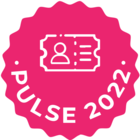Introduction
Now that you’ve mastered managing customer interactions and feedback, it’s time to focus on understanding what your customers have purchased and identifying potential upsell opportunities. Managing customer entitlements and tracking whitespace in your product offerings are crucial steps in ensuring your customers are fully utilizing their investments and discovering new ways to grow their engagement with your products.
Why does this matter?
Navigating customer organizations without a clear map can be challenging. By documenting org hierarchies, you can:
- Identify Key Stakeholders: Understand who the decision-makers, influencers, and key contacts are within the organization.
- Enhance Strategic Engagement: Tailor your interactions based on the roles and influence of different stakeholders.
- Improve Onboarding and Handoffs: Ensure that all team members have a clear understanding of the customer’s organizational structure, facilitating smoother onboarding and handoffs.
Centralizing this information in Gainsight provides your team with a comprehensive view of the customer’s organization, leading to more informed and strategic engagement.
Hot to get started
Ready to map out your customers’ organizational hierarchies? Here’s how you can get started:
Step 1: Gather Contacts and Organizational Data
- Identify Key Contacts: Work with your sales and account management teams to gather information on key contacts within the customer’s organization.
- Use Existing CRM Data: Import contact information from your CRM or other systems into Gainsight to ensure you have a comprehensive list of stakeholders.
- Update and Verify Data: Regularly update and verify the contact information to ensure accuracy and completeness.
Step 2: Build Customer Org Hierarchies in Gainsight
- Utilize People Maps: Use Gainsight’s People Maps feature to visually represent the organizational structure. This helps in understanding the relationships and hierarchies within the customer’s organization.
- Map Key Roles and Relationships: Clearly define and map out the roles, relationships, and influence of each contact. Highlight decision-makers, influencers, and key operational contacts.
- Integrate with C360: Embed the People Maps within the C360 layout to provide easy access for your customer success team.
Step 3: Leverage Org Hierarchies for Strategic Engagement
- Tailor Communication: Customize your communication strategies based on the roles and influence of different stakeholders. Ensure that messages are relevant and impactful.
- Plan Strategic Interactions: Use the org hierarchy to plan strategic interactions and engagements, such as executive briefings, QBRs, and renewal discussions.
- Monitor and Adjust: Continuously monitor the effectiveness of your engagement strategies and adjust based on feedback and changing dynamics within the customer’s organization.
Gainsight features you'll need
- People Maps: To visually represent and manage customer org hierarchies.
- C360: To centralize and display the organizational structure.
- CRM Connector: To import and sync contact information from your CRM.
- Reports: For tracking and analyzing stakeholder engagement.
What’s next?
With a clear understanding of your customers’ organizational hierarchies, you can engage more strategically and effectively. To further enhance your customer success strategies, check out our next article on Unify cross-functional team workflows with Gainsight, where we’ll guide you through integrating and accessing workflows from other teams to provide a complete view of customer activities.
Stay tuned, and happy mapping! 🎉
